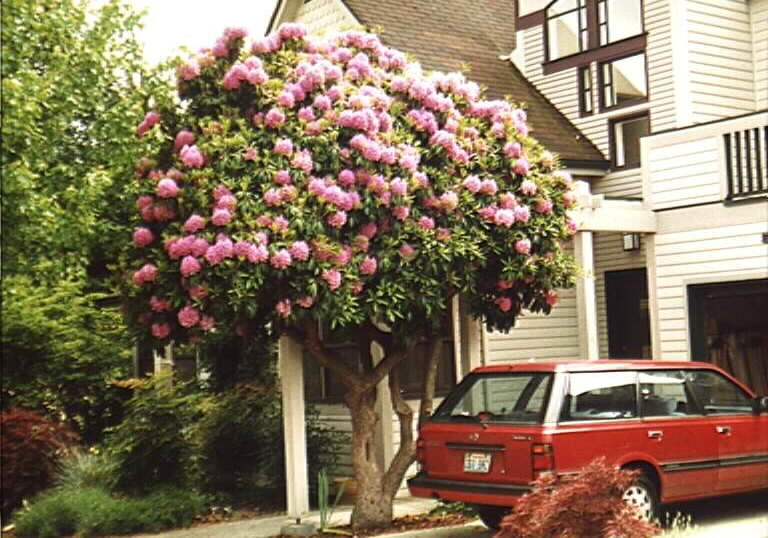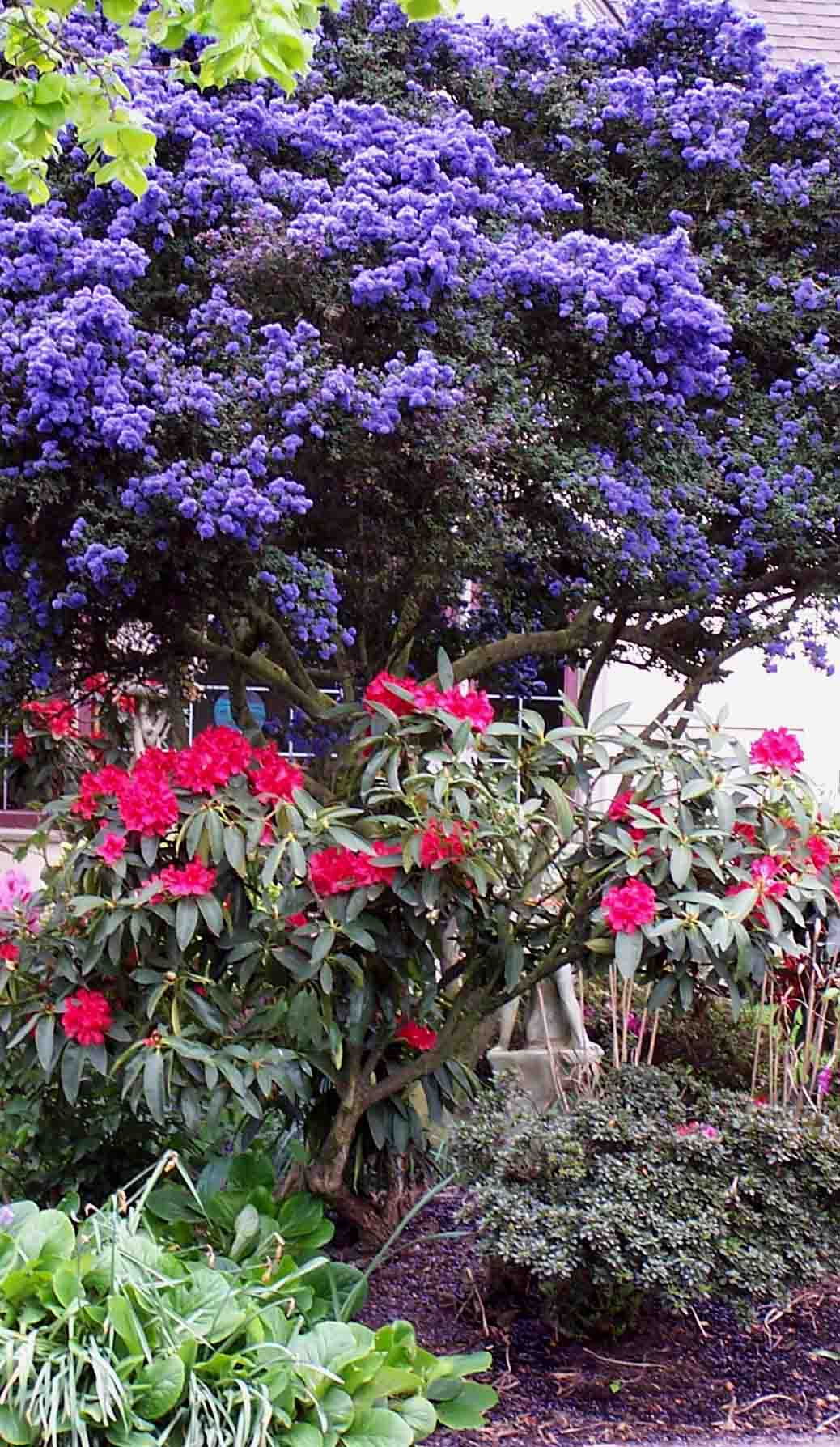It’s Holly’s day…but she’s off playing in a tropical paradise. So because she seems to be of a sunnier disposition than I am, I’ll post happy thoughts today.
One of my favorite pruning techniques, especially for small urban landscapes, is arborizing. This is a way of creating small trees out of large shrubs – and often, a large shrub is as much as a small landscape can handle. Rhododendrons are common landscape plants here in Seattle, and the larger ones lend themselves beautifully to this practice:


As you’ll notice in this example, arborizing not only creates an aesthetically pleasing tree form, but also moves the crown away from vehicular and pedestrian traffic. This protects the plant from damage and enhances access.
This also works wonderfully in landscapes where you would like to have layers of shrubs, rather than one massive plant. Look at this Ceanothus:

Arborizing this shrub not only allows planting additional plants underneath, but also allows some light into the house (note the window in the background).
Fall is generally a good time to prune (after the crowns have gone dormant). It’s easier to see trunk and branch architecture in deciduous trees, and generally places less stress on the plant.
If you’ve arborized shrubs before, which species work well for you? Which ones not so well?
See? I can be a happy blogger!
Beautiful plants. Such a great technique, when the plant structure allows it, and it can be such a good refinement in a mature garden.
Question: What about southern shrubs? I have some that might be good candidates and it'd be nice to shade the back of my house, but I'm curious what a pro would say good options are. (Texas, zone 8b but 120 miles inland in a savanna type area, but my summers can be VERY dry — zone 9-10.)
Karl, I don't know what types of shrubs that work well down there. In theory, this technique should work with any shrub that doesn't have thin or fragile bark that might be damaged by exposure to sun. It's also good to avoid the ones that tend to sucker or send up multiple trunks, since that will just create more maintenance work. Can you grow crape myrtle there, or is too hot? How about chaste tree?
Nice post and nice photos, Linda. You can do some cool things in a simlar vein to snazz up ratty looking junipers as well. Just be sure to wear long sleaves and gloves!
Fran – Hi Bert – I was interested in your post about arborizing junipers. We have a very large, overgrown one under our front deck that we need to do something with. How does the barbarizing technique work with them/?I notice this is an old chat log, so maybe it’s too out of date for replies.
Thanks.
Hi Fran: I posted some photos on the Garden professors Facebook page. The principles are the same as Linda has shown here. Start from the bottom and prune branches back to the main trunk. Keep working your way up and you will be left with the bare trunks, which usually have interesting bark patterns, and a crown of foliage. You can also see an example in a FineGardening article I did a while back (go to page 2)
http://www.finegardening.com/how-prune-conifers
The key element in this is using proper personal protective equipment; heavy long-sleeved shirt or jacket, gloves, head covering, eye protection. Junipers mean business – this is not a job for the faint of heart!
That's right, you can! Maybe we should collect photos, then do a calendar (tag line: wanna see what happens when shrubs have their skirts lifted?).